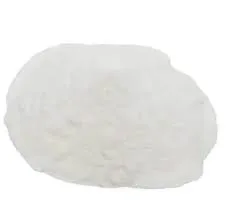
Oct . 31, 2024 22:49 Back to list
Exploring HPMC as a Versatile Excipients for Pharmaceutical Applications
The Role of HPMC Excipients in Pharmaceutical Formulations
Hydroxypropyl methylcellulose (HPMC) is a widely used excipient in the pharmaceutical industry, known for its versatility and effectiveness in various formulations. This cellulose derivative has gained popularity due to its excellent properties, such as solubility, gel formation, and film-forming capabilities. HPMC is primarily utilized as a binder, thickening agent, and film former in the preparation of tablets, capsules, and other dosage forms.
The Role of HPMC Excipients in Pharmaceutical Formulations
Another significant feature of HPMC is its role in improving the texture and stability of formulations. It acts as a thickening agent, providing the necessary viscosity to liquid formulations, such as suspensions and solutions. This property not only enhances the mouthfeel of liquid medications but also helps to suspend active ingredients evenly, ensuring that patients receive the correct dose with every administration. Moreover, HPMC contributes to the stability of formulations by forming a protective gel layer around the active ingredients, preventing degradation and ensuring longer shelf life.
hpmc excipient

Additionally, HPMC is non-toxic, biodegradable, and generally recognized as safe (GRAS) by regulatory authorities, making it an ideal choice for pharmaceutical applications. Its compatibility with a wide range of APIs further boosts its utility in formulating different types of medicines, including those for sensitive populations such as children and the elderly. The versatility of HPMC allows for its use in both solid and liquid dosage forms, enhancing its applicability in various therapeutic areas.
Research and development continue to explore the potential of HPMC in novel drug delivery systems. Innovations such as HPMC-based hydrogels and nanoparticles are emerging, offering new avenues for targeted and localized drug delivery. These developments are particularly promising in cancer therapy and chronic disease management, where precision in drug administration is paramount.
In conclusion, hydroxypropyl methylcellulose (HPMC) serves as a vital excipient in the pharmaceutical industry, contributing significantly to the formulation and delivery of medications. Its unique properties, such as controlled release, viscosity enhancement, and formulation stability, make it indispensable for developing effective and safe drug products. As the pharmaceutical landscape continues to evolve with new challenges and discoveries, HPMC will remain a key player in the ongoing quest for better therapeutic solutions. The future of HPMC in drug delivery systems looks promising, with opportunities for innovation and enhanced patient care on the horizon.
-
Versatile Hpmc Uses in Different Industries
NewsJun.19,2025
-
Redispersible Powder's Role in Enhancing Durability of Construction Products
NewsJun.19,2025
-
Hydroxyethyl Cellulose Applications Driving Green Industrial Processes
NewsJun.19,2025
-
Exploring Different Redispersible Polymer Powder
NewsJun.19,2025
-
Choosing the Right Mortar Bonding Agent
NewsJun.19,2025
-
Applications and Significance of China Hpmc in Modern Industries
NewsJun.19,2025







